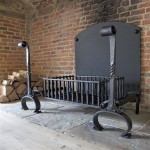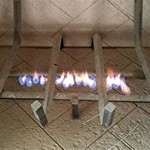How Much To Add A Gas Fireplace: Cost Factors and Project Breakdown
Adding a gas fireplace to a home enhances both aesthetics and functionality. The allure of a warm, inviting flame, coupled with the convenience of instant ignition and controllable heat, makes gas fireplaces a desirable feature for many homeowners. However, the total cost associated with adding a gas fireplace can vary significantly depending on a multitude of factors. Understanding these cost drivers is crucial for budgeting and planning a successful fireplace installation project.
The overall expense of a gas fireplace installation encompasses not only the cost of the fireplace unit itself, but also materials, labor, and potential permits or inspections. Furthermore, the complexity of the installation, existing home infrastructure, and desired aesthetic features all contribute to the final price. A thorough assessment of these elements is necessary before embarking on the project.
Key Point 1: Fireplace Unit Costs and Types
The selection of the gas fireplace unit is a primary determinant of the project's overall cost. Gas fireplaces are available in a diverse range of styles, sizes, and functionalities, each carrying a different price tag. The most common types include gas inserts, freestanding gas stoves, and direct-vent gas fireplaces.
Gas inserts are designed to be installed into existing wood-burning fireplace openings. They offer the convenience of gas heat without requiring extensive construction. The cost of a gas insert typically ranges from $2,000 to $5,000 for the unit alone. Factors influencing the price include the BTU output (heat capacity), the size of the unit, the venting system required (some inserts use existing chimneys, while others require new venting), the aesthetic design (facing, log set, and firebox lining), and any additional features, such as remote controls or programmable thermostats.
Freestanding gas stoves resemble traditional wood-burning stoves and offer a rustic aesthetic. They can be placed virtually anywhere with access to a gas line and venting. The price range for a freestanding gas stove typically falls between $1,500 and $4,000, again varying according to BTU output, size, design features, and included accessories.
Direct-vent gas fireplaces are designed for new construction or more extensive remodeling projects. They vent directly to the outside through a wall or roof, offering greater flexibility in placement compared to gas inserts. The cost of a direct-vent gas fireplace unit is usually the highest, ranging from $3,000 to $8,000 or more. These units often come with advanced features, such as realistic flame patterns, sophisticated control systems, and customizable design options. Larger units with higher BTU output and more elaborate designs will naturally incur higher costs.
Beyond the type of fireplace, the brand reputation also influences the price. Well-established brands with a history of reliability and performance typically command higher prices. While investing in a reputable brand may involve a larger upfront cost, it often translates to long-term value through increased durability, efficiency, and access to reliable customer support.
Key Point 2: Installation Costs: Labor, Venting, and Gas Line
The labor costs associated with installing a gas fireplace represent a significant portion of the overall project expense. The actual labor costs are influenced by the complexity of the installation, the location of the fireplace, and the prevailing labor rates in the homeowner's geographic area. Hiring qualified professionals, including licensed gas fitters and HVAC technicians, is crucial to ensure a safe and compliant installation.
Installing the venting system is a critical component of the installation process. The type of venting required depends on the type of gas fireplace selected and the construction of the existing home. Direct-vent fireplaces require a dedicated venting system that runs directly to the exterior of the house. Ventless, or vent-free, fireplaces do not require venting, but their use may be restricted by local building codes due to indoor air quality concerns. Converting from a wood-burning fireplace that already has a chimney will likely involve adapting the existing chimney with a liner, while a new installation will involve running new venting through walls or ceilings.
Extending a gas line to the location of the new fireplace also adds to the installation costs. This task requires specialized expertise and must be performed by a licensed gas fitter to ensure safety and compliance with local building codes. The cost of gas line installation depends on the distance from the existing gas meter, the accessibility of the space, and the complexity of running the line through walls, floors, or ceilings. In some cases, upgrading the existing gas meter may be necessary to accommodate the additional gas consumption of the fireplace, further increasing the cost.
Permit and inspection fees are another often-overlooked cost factor. Most municipalities require permits for gas fireplace installations to ensure adherence to safety and building codes. Inspection fees are charged to verify that the installation meets the required standards. These fees can vary widely depending on the locality but should be factored into the overall budget.
Preparing the area for the fireplace can add to installation costs as well. Framing, drywall, and adding a hearth contribute to the installation. This allows you to create a custom look to match your home's decor and increase the overall aesthetic.
Key Point 3: Additional Costs: Aesthetics, Customization, and Ongoing Expenses
Beyond the core installation expenses, several additional costs can significantly impact the overall project budget. These costs include aesthetic enhancements, customization options, and ongoing maintenance expenses.
Aesthetic enhancements significantly influence the final appearance of the fireplace. These enhancements include decorative fireplace surrounds, mantels, hearth extensions, and custom firebox linings. The selection of these features allows the homeowner to personalize the fireplace and integrate it seamlessly with the existing décor. However, these aesthetic upgrades can add substantially to the project cost, depending on the materials and complexity of the design.
Customization options, such as remote controls, programmable thermostats, and smart home integration, provide added convenience and control over the fireplace operation. These features enhance the user experience but typically incur additional costs. For example, a remote control allows for adjusting the flame height and temperature from the comfort of a chair, while a programmable thermostat enables automatic temperature regulation. Smart home integration allows the fireplace to be controlled via a smartphone or voice assistant, providing even greater convenience and energy efficiency.
Ongoing maintenance expenses should also be considered when budgeting for a gas fireplace. Regular maintenance, such as cleaning the burner assembly and inspecting the venting system, is essential to ensure safe and efficient operation. Annual inspections by a qualified technician are recommended to identify any potential problems and prevent costly repairs. The cost of these maintenance services varies depending on the provider and the scope of the inspection.
Furthermore, the cost of natural gas or propane, the fuel source for the fireplace, should be factored into the overall budget. Gas prices fluctuate depending on market conditions and geographic location. Estimating the average monthly gas consumption of the fireplace is essential for budgeting purposes. The BTU output of the fireplace and the frequency of use will determine the amount of gas consumed. Using a programmable thermostat and optimizing the use of the fireplace can help minimize energy consumption and reduce ongoing fuel costs.
Finally, consider the cost of furniture rearrangement or decorative updates needed to fully integrate the fireplace into the living space. The addition of a fireplace often necessitates rethinking room layouts and updating décor to complement the new focal point. This may involve purchasing new furniture, repainting walls, or adding decorative accessories. While these costs are optional, they can significantly enhance the overall aesthetic appeal of the fireplace and create a more cohesive living space.
In summary, determining the total cost of adding a gas fireplace requires careful consideration of numerous factors. These factors include the type of fireplace unit, the complexity of the installation, the aesthetic enhancements desired, and the ongoing maintenance expenses. By thoroughly assessing these elements, homeowners can develop a realistic budget and ensure a successful fireplace installation project.

How Much Does A Gas Fireplace Cost Fireplaces Direct Learning Center

How Much Does A Gas Fireplace Cost Fireplaces Direct Learning Center

How Much Does It Cost To Install A Gas Fireplace Homeserve Usa

Gas Fireplace Cost Guide Unit Add Ons Installation More

Estimated Page Fireplaces Stoves Inserts Wood Gas Pellet

Gas Fireplace Insert Cost Forbes Home

Estimated Page Fireplaces Stoves Inserts Wood Gas Pellet

Gas Fireplace Installation Cost Dbs Inc

2024 Gas Fireplace Insert Costs

Gas Fireplace Inserts Pros And Cons Of Ventless Fireplaces
Related Posts








